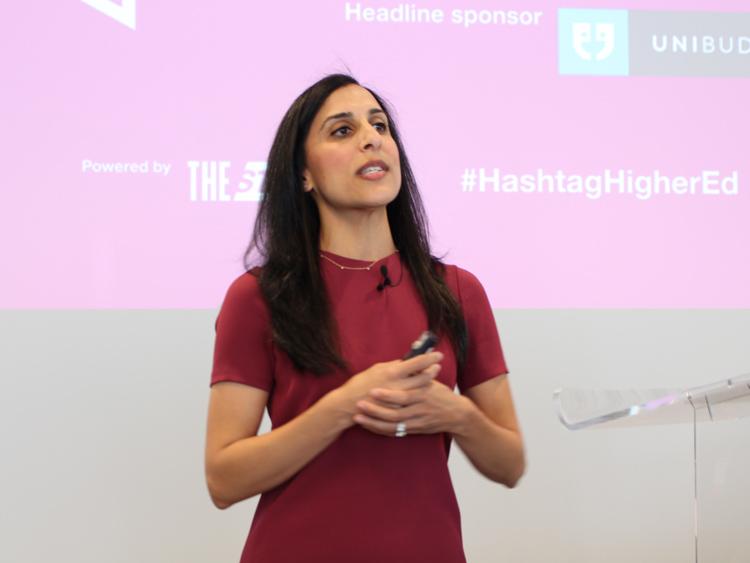
Market orientation must be an institution-wide endeavour

The globalisation of higher education is not a recent phenomenon, but it is changing. Through collaboration, co-authorship and the digitalisation of university programmes, the physical, geographical and cultural boundaries that once kept institutions distinct are being eroded. This, in turn, means education markets are converging, as THE Consultancy’s TNE 3.0 report states.
If markets are converging and boundaries blurring, then the way a university orientates itself in that market is ever more important. As the environment becomes more competitive, differentiation is crucial.
It follows that marketing will be an activity that more institutions across the world invest in. However, this type of marketing does not relate to the promotional or brand-related collateral produced by a dedicated team of creatives. Instead, it refers to something far broader – a philosophy that all functions of the university are anchored to, which is demand-focused and responsive to a diverse set of emerging student needs. Through this philosophy, an institution can find its unique position and distinct competitive advantage.
When considering the prospective student as a potential consumer, the products available to that student can be overwhelming. With the consumer need now extending far beyond the attainment of a university degree, the solutions that serve that need have been similarly adaptive. In the UK, for example, a prospective student can choose between a degree or a degree apprenticeship. Across Europe, the choice may be between a more traditional and research-led course, or one that is work-based and practical.
A traditional approach to analysing these needs may lead to market segmentation, revealing the diversity of requirements to be fulfilled. As well as the 18-year-old undergraduate with post-secondary qualifications, which varies worldwide, segments now include: part-time degrees for students who are employed or have caring responsibilities; continuing professional development courses for the purpose of up-skilling or lifelong learning; and online distance learning, to name a few.
- Spotlight guide: University marketing and branding that attract attention
- Why you should do a staff mobility programme and how to set one up
- Is your university worth the investment for international students?
While it may be crude to discuss higher education as a product in a marketplace to be consumed by a student, a variety of national policies permit its commodification. The Qatar National Vision 2030 commits to the growth of a “world-class educational system” that can produce a pipeline of graduates equipped with the skills to succeed in the workplace. The Spain 2050 national strategy commits to the development of a university education that teaches “the technical skills of our time”. In both examples, and in the wider story told across the globe, higher education is now indivisible from its contribution to national development and the drive towards a knowledge-based economy. Perhaps implicit in this trend is the increasing accountability placed on universities to consider the long-term impact of their activities in relation to national interests. Market orientation, therefore, has a more holistic role to play.
Within this diverse set of market segments, a university may also consider potential markets – whether geographic or consumer focused – that indicate favourable entry opportunities. For example, decisions may be made between domestic or international markets, the delivery of domestic programmes abroad via transnational education, or even online delivery.
The traditional marketing mix of product, price, place and promotion is more diverse than ever in higher education’s history. Place, for example, now covers both physical and virtual environments, while product is becoming increasingly indiscriminate. Similarly, the country markets considered for other forms of entry, such as research partnerships or staff mobility programmes, are widening.
At THE’s 2024 World Academic Summit, the University of Manchester’s vice-chancellor, Duncan Ivison, proposed that institutions in the Global South are presenting more ripe opportunities for creative thinking and innovative problem-solving to address global challenges than many traditional anglophone universities.
The increasing attention given to the whole student experience as a product further embeds university education in the marketplace. The educational part of this product may be mapped onto a value chain, where value-adding activities during a study period include employability support, placement opportunities and extracurricular activities. To view this through a purely economic perspective, post-graduation outcomes may represent the final value-added to the student and broader society.
There are challenges to securing a unique competitive advantage in a crowded market. Differentiation may be sought via unique programmes, partnerships or supplementary value-adding activities.
The question of how higher education institutions should identify and establish a market orientation is an important one. It must go beyond the elements of brand that we typically associate with marketing activity. Instead, it should be embedded in culture and practice across all departments, functions and relationships. Only when marketing is considered through this lens can universities build long-term, strategic and sustainable thinking into their activities.
Emily Owen is a consultant at THE Consulting.
If you would like advice and insight from academics and university staff delivered direct to your inbox each week, sign up for the Campus newsletter.


